
Uplifting experience!
We were incredibly fortunate to begin our learning inquiry with a visit from Andrew Parker from ‘Flying High for Kids’ with his Hot Air Balloon! Andrew, with the help of some tamariki, set up the balloon, and then members from Mataī went for a fly over our kura, Rimu School. The whole community came for a look! We were kāhu, gaining a birds eye view of our place. We saw our local awa, farmlands, buildings and homes of those who live nearby. In the distance we spotted the Takatimu covered in snow and glimpses of Rākiura. From above, we could consider the positives of our local environment and what might need improved.
Andrew’s charity Flying High promotes the importance of education, innovation and sustainability and to ‘Dream Big’. Through STEAM (Science, Technology, Engineering, the Arts and Mathematics), the tamariki learn to innovate an environmental initiative that improves their community.
From being a kāhu and considering STEAM, we identified an issue with rubbish. Lots and lots of rubbish!
We decided to go out and pick up rubbish. We collected rubbish along Rimu Road and Oteramika Road and then spent the next week in maths sorting, collating, graphing, weighing and measuring it all. We found (in 850m of road) a total of 74.5kgs of rubbish – 28 sacks full, 3142 pieces, including a vacuum cleaner.
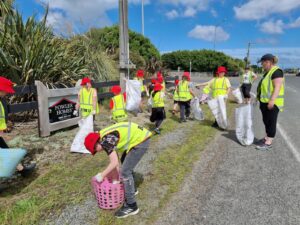
Keeping safe while picking up rubbish.

Rubbish collected, sorted, weighed and measured before results were collated and graphed.
We then explored the impact of this rubbish in our environment and started to wonder how our friends, the longfin eel might be impacted? They of course live in our local awa, the one we spotted from high above!
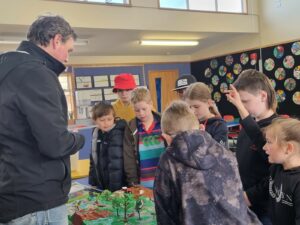
Enviroschools Southland, Josh helps students to learn about their enviroscape.
We learnt about why the longfin eel are taonga and had Josh from Environment Southland come and talk to us about the harm being caused to our waterways through different pollutants and he gave us some tips on how to work to help our waterways. We had Bee Pikia help us to understand why these incredible creatures, the longfin eel, are important, not only historically by Māori but also today.
With Josh and his team’s guidance, we then decided to carry out a ‘Healthy Stream Assessment’ to check if the Waihopai River, a source that our local awa runs from, is a healthy body of water for our taonga, the eels. We worked in teams to understand the stream health and the invertebrate that contribute to that and microplastics studies to look at how plastic affects species such as tuna. With the help of Josh’s team we could determine the health of the waterways and any issues. One we noted was the high microplastics, so we need less rubbish getting into our awa, the second was the lack of planting to provide shade for the tuna.

A ‘Healthy Stream Assessment’ at Waihopai River,
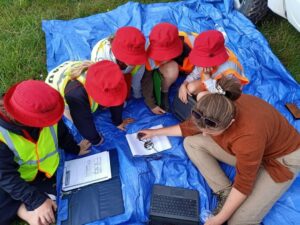
Getting help to interpret assessment of the stream health.
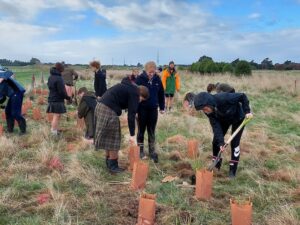
Getting involved in planting native species to help water quality.
We then have to ‘action’ our learning! So with help, we went back to the Waihopai Awa to plant native trees, riparian planting. Some tamariki organised a rubbish collection at our beach, some built longfin eel homes (recycled pallets, woollen sacks and pegs) to provide shade and others created signs to educate people.
We all hoped that if we went back up in a Hot Air Balloon with Andrew as a kāhu, we could see more positives in our local environment…less rubbish, more taonga swimming and the awa healthier.
We’re incredibly grateful to Environment Southland, particularly Josh Sullivan, Andrew from ‘Flying High for Kids Charity’ and our community who supported us on our inquiry. – Alice Casey, from Rimu School

Students demonstrate their understanding of the long-finned eel – tuna.
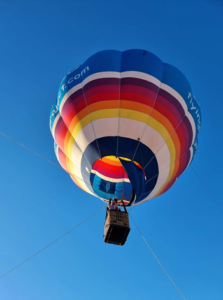
Imagine being a kāhu.